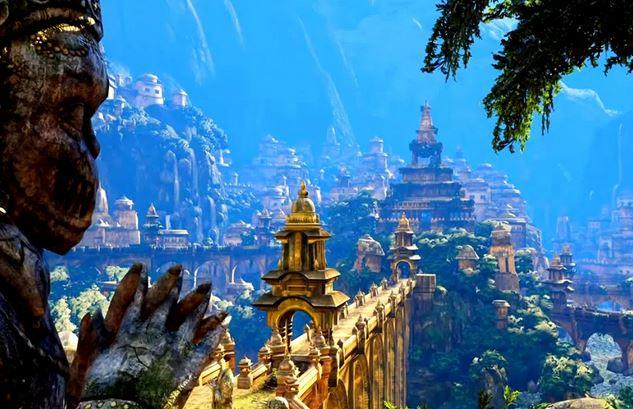Shambhala

Shambhala is a mythical and sacred place often described in Tibetan Buddhism and other spiritual traditions as a hidden kingdom or land of peace, wisdom, and enlightenment. It is believed to be a spiritual utopia, a place where people live in harmony, and where the knowledge of the true nature of existence is preserved.
Here are some key aspects of Shambhala:
1. Spiritual Significance:
Shambhala is often considered a spiritual metaphor as well as a physical place. In Tibetan Buddhism, it is described as a hidden land or a pure realm that can only be accessed by those with the right spiritual disposition—those who have achieved a certain level of spiritual purity or wisdom.
The concept of Shambhala appears in several texts, including the Kalachakra Tantra, a central Buddhist text. According to this text, the kingdom of Shambhala is ruled by a wise and enlightened king, and its people live in harmony with nature, embodying virtues such as compassion, wisdom, and non-violence.
2. Physical Location:
Traditionally, Shambhala is believed to be located somewhere in the Himalayas, although its exact geographical location is unknown and considered to be a place beyond the reach of ordinary people. Some suggest that Shambhala could be a physical, hidden place on Earth, while others view it as a symbolic or inner spiritual state of consciousness.
In some legends, it is described as being protected by spiritual guardians, and its entrance is hidden from the unworthy. The idea of a hidden kingdom that can only be found through inner spiritual awakening is a central theme in many stories about Shambhala.
3. Role in Tibetan Buddhism:
In Tibetan Buddhism, the idea of Shambhala is tied to the concept of kalachakra, which refers to both a cycle of time and a system of meditation practices aimed at achieving spiritual realization. The Kalachakra Tantra speaks of a prophesied battle between forces of good (represented by Shambhala) and evil (represented by the forces of materialism and ignorance) that will take place in the future.
According to this prophecy, when the world falls into chaos and suffering, the people of Shambhala will emerge as powerful warriors, led by the king of Shambhala, to restore balance and bring about a new age of peace and enlightenment.
4. Shambhala as a Symbol:
Shambhala has become a symbol of spiritual aspiration, inner peace, and the potential for human beings to transcend the limitations of the material world. The idea that such a place exists both in the physical world and in the realm of consciousness has inspired many seekers of wisdom, meditation practitioners, and even artists.
The concept also represents the potential for humanity to live in a state of higher consciousness and enlightenment. In this sense, Shambhala is not just a geographical location but a state of mind or an ideal state of being.
5. Shambhala in Western Culture:
The idea of Shambhala has also become popular outside of Tibet and Buddhist circles, particularly in Western New Age and spiritual movements. Some see it as a lost paradise or a utopian society where the wisdom of the ancient world is preserved, and some believe that the spiritual teachings of Shambhala hold the key to humanity’s future evolution.
Additionally, various interpretations of Shambhala have appeared in books, movies, and other media, often linked to ideas of spiritual awakening and the pursuit of a higher state of consciousness.
6. Shambhala and the "Warrior" Archetype:
The warriors of Shambhala, as described in some teachings, are not warriors in the typical sense of combat. Instead, they are "spiritual warriors" who fight against ignorance, suffering, and confusion. The concept of the warrior in Shambhala teachings is tied to the idea of cultivating bravery, wisdom, and a sense of responsibility toward the well-being of others.
In short, Shambhala is a deeply spiritual and mystical concept, representing the ideal of peace, wisdom, and compassion that humanity can aspire to, both individually and collectively. It challenges those who seek it to look within, not just to find a hidden land but to uncover their own potential for enlightenment and transformation.

